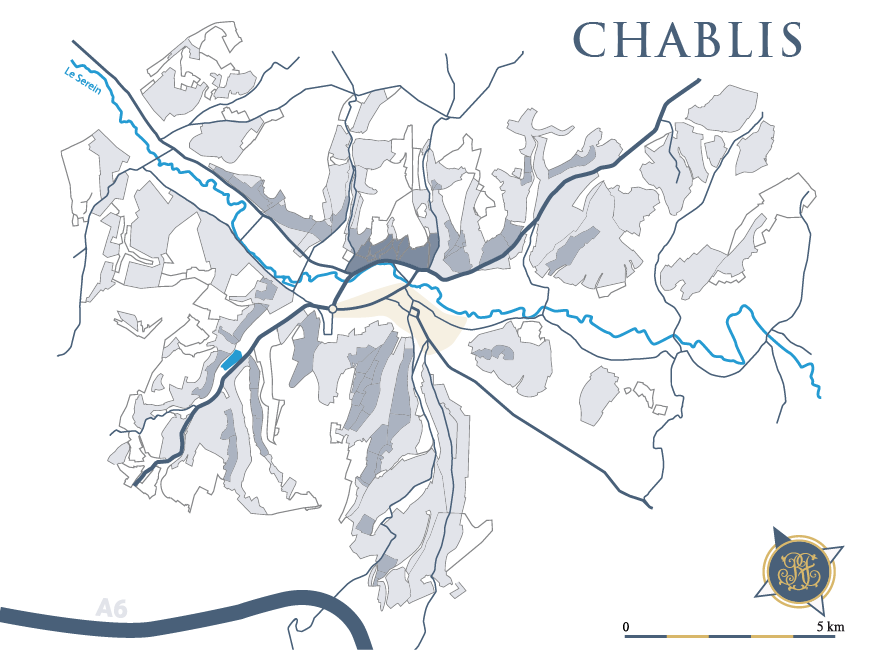Production area
The grapes for this village appellation were harvested within the delimited areas of 17 villages including the village of Chablis. This appellation covers a surface area of 3 367,28 hectares, making it Burgundy’s largest AOC. Our Chablis comes from the marly terroirs of Courgis to the south of Chablis.
Origins
Chablis' vineyards are completely set apart from the rest of Burgundy, giving them characteristics that are utterly distinctive. The unique terroir made of exogyrious marls originates from the Kimmeridgian era: it’s made of small oysters [exogyra virgula] that lived there when the sea covered the area and fossilized when the sea withdrew. It gives the wines their minerality and sharpness.
Varietal
100% Chardonnay
Tasting notes
COLOUR : Pale gold
NOSE : Intense notes of fresh fruits (pink grapefruit)
PALATE : Fresh, well-balanced with citrus notes and sweet aromas of pear and hazelnut.
Vinification and maturing
The grapes once harvested were pressed delicately for a long time in a pneumatic press that allows a better extraction of the juice and reduces the risk of oxydation. Vinification is then operated in thermo-regulated stainless steel tanks. For this wine, we put the stress on having a fast malolactic fermentation in order to keep the freshness of the wine and ensure the purest aromas. Complexity was brought by a little part of the wine aged in oak barrels.
Food and wine pairing
Perfect with oysters, fish, poultry, some types of exotic cuisine (japanese, indian) and goat cheeses.
Serving suggestions
Ideally serve between 10 and 12°C (50- 54°F)
Ageing potential
Generally speaking, it is preferable to drink Chablis wines in their youth so as to best appreciate their distinctive freshness, but they can age for 2 to 5 years.
Vintage : 2015
This year in Chablis, the first bud outbreaks were late to come after an uneven winter. Fortunately, in mid-April, mild temperatures settled and allowed for a quick growth of the vines which triggered an early flowering by the beginning of June. The vegetative cycle was slowed during the month of July, because of high temperatures and a cruel lack of rain. The drought created some stress in the vines and lead to the formation of small berries. The month of August was particularly hot with temperatures 2°C above the average, showing the first signs of ripening. As this climatic condition lasted, it generated a very healthy vineyard and a quick ripening. Unfortunately, a violent hail storm in the region cut through the potential harvest in the night of the 1st of September. The huge amount of rain that fell forced the vine growers to harvest sooner than planned for the risk for diseases to develop. So, the harvest stretched over two weeks and despite lower quantities, the grapes were of very good quality and balance.
The vintage is already seen as a very good one and described as solar and fruit-forward.
Where to find us
21190 Meursault
France
Fax: +33 (0) 3 8 0 2 1 6 9 2 9








 PDF file
PDF file
